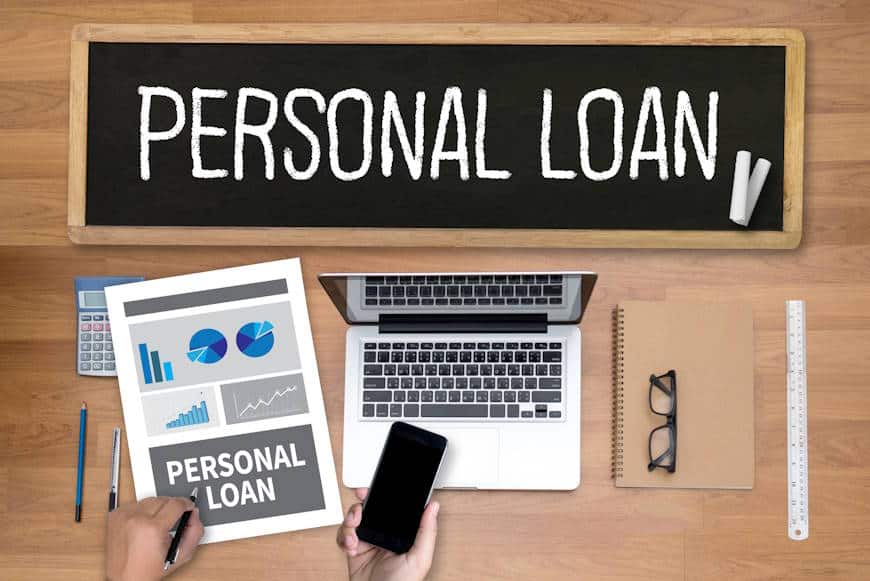Life often throws us challenges that require immediate financial solutions, whether starting a small business, funding a dream vacation, or renovating your home. These expenses can be too heavy for a credit card and too urgent to wait until you’ve saved enough.
In such cases, a personal loan can be a valuable tool to help you achieve your goals. However, the key to making the most of a personal loan lies in understanding how it works and managing it wisely.
In this blog, we will learn about secured personal loans, exploring how they can support your financial aspirations while highlighting the essential aspects you need to consider.
What is a personal loan?
A personal loan is money from a bank, credit union, or online lender for various purposes. Unlike credit cards, which are often used for smaller, spontaneous purchases, personal loans provide a larger amount of money upfront, which you repay in fixed monthly instalments over a set period, typically one to seven years.
It offers a flexible and structured way to access the funds you need for significant expenses, providing financial control and peace of mind.
Unsecured versus Secured Personal Loans
When considering a personal loan, it’s important to understand the difference between secured and unsecured loans.
Secured Loans
A secured loan requires you to provide an asset, such as your car as collateral. If you fail to repay the loan on time, the lender can repossess and sell the asset to recover the amount. Because the lender has this security, secured loans often have lower interest rates. They can be a good option if you need a larger sum of money and have valuable assets to offer as collateral.
Unsecured Loans
In contrast, an unsecured loan doesn’t require any collateral. You won’t need to provide an asset as security, but because the lender is taking on more risk, the interest rates for unsecured loans are typically higher. Even without collateral, if you fail to repay the loan, the lender can still take legal action to recover the borrowed money.
Step-by-Step Guide to Applying for a Personal Loan
This quick overview provides the steps you need to take to apply for a personal loan.
Step 1: Evaluate your finances
Before proceeding, assess your finances by considering three key factors:
- Establish the purpose of the personal loan to determine the required amount and feasible repayment terms.
- Ensure a healthy credit score, which enhances your negotiation leverage for loan terms and amounts.
- Craft a comprehensive monthly budget to gauge affordability for additional expenses, such as loan payments.
Step 2: Explore and Evaluate Loan Providers
After gaining clarity on your financial standing, research and compare potential lenders. Focus on crucial aspects such as interest rates, ensuring they align with your budget. Be mindful of fees, including application and prepayment penalties, to understand the overall cost.
Assess the lender’s reputation through online reviews and ratings to verify their trustworthiness. Additionally, prioritising customer service quality is vital in addressing any issues that may arise during the loan period.
Step 3: Prepare Necessary Documents
To facilitate your loan application, gather essential documents requested by lenders. These typically include a government-issued ID for identification purposes, pay slips or tax returns to verify income, recent bank statements to demonstrate financial stability, and a review of your credit report. If applying for a secured loan, prepare documents related to collateral, such as car titles.
Step 4: Complete the Application
It’s time to complete the loan application after selecting a lender and gathering all necessary documents. Many lenders offer quick and convenient online applications. Ensure you provide accurate information, as any errors could delay approval.
Step 5: Await Approval
Once your application is submitted, the lender will review your documents and assess your creditworthiness. Depending on the lender, the approval process can take a few minutes to several days. Some lenders offer pre-approval to give you an idea of your eligibility before a full credit check.
Step 6: Review and Agree to Loan Terms
If your application is approved, carefully examine the loan terms, including the interest rate, loan amount, repayment schedule, and associated fees. Ensure you fully understand and agree with the terms before accepting the loan.
Step 7: Receive Your Funds
After accepting the loan terms, the lender typically transfers the funds to your bank account. This transfer may take a few business days, so be patient while waiting for the funds to arrive.
Personal Loan Budgeting and Repayment Tips
Personal loans are becoming an increasingly popular choice among Australians for funding various endeavours. According to a recent survey by Finder, one in five Australians will take out a personal loan within the next six months, translating to nearly 4.5 million individuals.
These loans are not just for typical expenses like cars or home renovations; Australians also borrow to fund weddings, dream holidays, elective surgeries, further education, and even tropical fish tanks. With such diverse uses, effective budgeting and repayment strategies are essential to manage personal loans wisely.
Create A Budget
A budget is like a roadmap for your money, helping you understand where and where it should go. Start with simple categories to track your expenses effectively, and use free online resources or apps if you need help.
Pay On Time
Paying your bills promptly prevents late fees and keeps your credit score healthy. Setting up automated payments can also make staying on track with your monthly payments easier.
Pay More Than Your Minimum
Making extra payments reduces your overall debt faster and saves you money on interest. It also boosts your credit score and can lead to better financial opportunities in the future.
Keep An Eye On Your Credit Score
Your credit score impacts your financial health and influences future loan opportunities. Managing your loans responsibly improves your credit score, leading to better terms on future loans and purchases.
Conclusion
Personal loans offer a practical and flexible solution to finance significant expenses, from home renovations to dream vacations. Understanding the distinctions between secured and unsecured loans, carefully evaluating your financial situation, and selecting the right lender are crucial steps in the loan application process.
Effective budgeting and repayment strategies are equally important to ensure you manage your loan responsibly and maintain a healthy credit score. By understanding these insights, you can make informed decisions that align with your financial goals and confidently achieve your aspirations.
Always engage a professional such as a Mortgage Broker to facilitate the personal loan on your behalf, mortgage brokers apply for finance daily so have an expert in your corner to help research the best options for you.
Ready to take control of your finances? Explore your personal loan options today and find the perfect solution for your needs. Visit our Personal Loas section for more information and to get started!
Sources:
https://www.commbank.com.au/articles/personal-loans/guide-to-taking-out-a-personal-loan.html
https://www.nicu.com.au/personal-car-loans/what-is-a-personal-loan
https://www.peppermoney.com.au/resources/real-life-guide-to-personal-loans
https://www.discover.com/personal-loans/resources/learn-about-personal-loans/borrowing-and-saving/
https://www.nerdwallet.com/au/loans/how-to-get-a-personal-loan
https://www.financeking.com.au/a-step-by-step-guide-on-how-to-apply-for-a-personal-loan/
https://societyone.com.au/blog/a-practical-guide-to-obtaining-a-personal-loan


